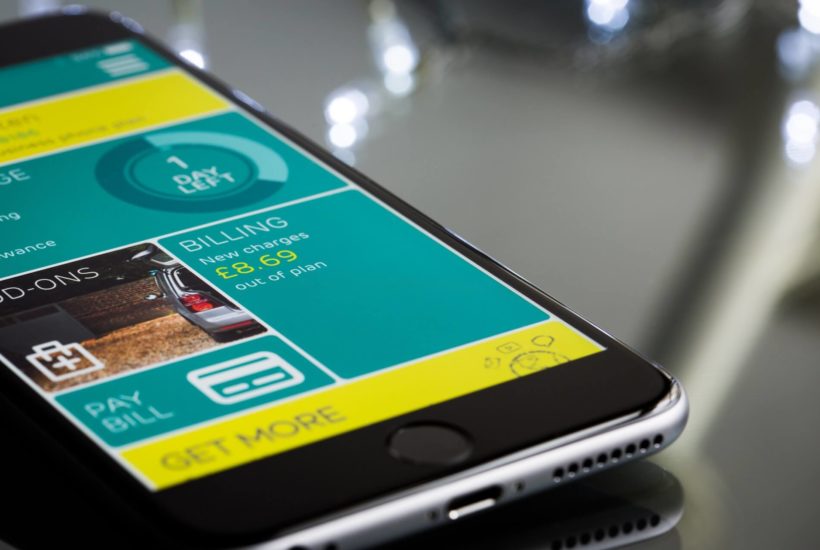Featured
Banking industry readies itself for new channels of engagement
Banking channels are evolving through mobile banking apps, messaging payment and even wearable devices.

In 2018, when a Bain & Company survey asked Amazon Prime customers about their willingness to try a free Amazon account, a significant 65 percent responded in the affirmative. Another report on American homebuyers said that 32 percent were happy to apply for a mortgage online and that consumers wanted more digital solutions in this area. Alternative financial service providers such as Lending Club and Fundraise are household names in their respective markets today, a definitive sign that fast and convenient banking services trump any traditional propositions or promises of yore.
Clearly, digitization has changed banking behavior beyond description, and nowhere is this more apparent than in the evolution of banking channels. It is as though customers can’t get enough of digital touch points, whether it is the mobile banking app, messaging payment, wearable device or laptop computer. And now, a new trend, namely open banking, is further feeding their frenzy by dismantling the traditional distribution framework in favor of an expanding network of bank-and-third-party-owned channels of engagement.
To understand the future of banking distribution, the 2018 Innovation in Retail Banking study presented by Efma and Infosys Finacle asked more than 300 banking leaders and practitioners how they saw channels evolving between now and 2022.
To start with, respondents answered along predictable lines, saying that existing digital channels, such as mobile and Internet, would dominate in 2022, followed by digital assistants and open banking (third party) channels. But then they said something quite dramatic – that the branch would be the second least important delivery channel, and even the relationship manager, who is so important to wealth management and corporate banking today, would have a very small role to play in about four years’ time.
Clarity of vision, however, did not mean readiness on the ground. When asked how prepared they were to handle the digital channels of the future, only 26 percent of respondents feel that their readiness to leverage open APIs to deliver expected business outcome is high. In our view, banks should consider the following measures to prepare for 2022.
Offer frictionless channel experiences: When touch points multiply, it becomes harder to deliver a seamless user experience across all. As they add smart virtual assistants and third party channels to an already complex mix, banks must evolve a strategy to ensure purposeful, unified and highly contextual interactions at every point and event of contact.
Ensure accountability: Banks must entrust the responsibility for achieving readiness to face the digital realities of 2022 to a senior executive, preferably the chief digital officer, who will oversee the following steps:
- Reimagining the customer journey(s), making sure that all channels, whether a bank-owned or third party, work seamlessly together. Channel silos or isolated channel initiatives must make way for an integrated, cross-channel approach.

Some banks have taken this seriously and are looking to play a larger role in the lives of customers. DBS Bank shows how with its marketplaces for property and cars that are one-stop shops for all the requirements – and not just loans – of customers looking to buy a home or automobile.
- Adopting the cloud for enabling the business in several ways, including making it more agile and innovative. Take the example of Australia Military Bank, which has implemented a digital banking solution stack on the cloud in a purely software-as-a-service model to gain a 46 percent increase in sign-ups and a whopping 116 percent rise in mobile app registration.
- Leveraging data and analytics throughout the enterprise for a better understanding of customer requirements at the right place and time. For this it is essential for data to be consolidated by aggregating and analyzing internal (mostly structured, formal) data of different types, unleashing algorithms to process unstructured and structured information (such as transactions or payments) into actionable insights and finally, applying machine learning and advanced analytics on a variety of data, from industry events to social media chatter to sale transactions, to arrive at decisions and recommendations.
- Implementing open systems to maximize advantage in the open economy. Traditional structures are dismantling as open banking takes hold – the pipeline model is making way for the platform, monolithic institutions are being replaced by ecosystems, and banks are offering both own and third-party products, channels and experiences to their customers. Banks must take full advantage of open banking opportunities to increase revenue, profit, and customers. Here, ING serves as a good example, with its digital banking app, Yolt, offering full third-party access integration in the United Kingdom to link to other banks including Lloyds Banking Group, RBS, HSBC, Monzo, and Starling.
Today, banks that own the customer experience are likely to own the market as well. Survey respondents of the Efma – Infosys Finacle study also rated platform companies, such as Amazon, which are the masters of experience, and not conventional banks, to be best placed to lead banking innovation leading up to 2022. If incumbent banks are to maintain their position in the future, they must strengthen the focus on customer engagement and experience, delivering it equally well on all channels, whether their own or from a third party.
—
DISCLAIMER: This article expresses my own ideas and opinions. Any information I have shared are from sources that I believe to be reliable and accurate. I did not receive any financial compensation for writing this post, nor do I own any shares in any company I’ve mentioned. I encourage any reader to do their own diligent research first before making any investment decisions.

-

 Crypto2 weeks ago
Crypto2 weeks agoXRP vs. Litecoin: The Race for the Next Crypto ETF Heats Up
-

 Crypto1 day ago
Crypto1 day agoCrypto Markets Surge on Inflation Optimism and Rate Cut Hopes
-

 Biotech1 week ago
Biotech1 week agoSpain Invests €126.9M in Groundbreaking EU Health Innovation Project Med4Cure
-

 Biotech4 days ago
Biotech4 days agoAdvancing Sarcoma Treatment: CAR-T Cell Therapy Offers Hope for Rare Tumors

























